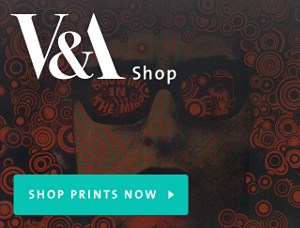Conservation Journal
Spring 2004 Issue 46
Editorial

Sandra Smith, Head of Conservation
The departmental work programme is as intense as ever, and we are looking forward to the challenge of delivering more of the Future Plan for the Museum.
The Museum’s New Paintings Galleries opened in November 2003, and the V&A paintings collection, a well-kept secret for many years, is once again on public display. Thanks go to the conservation team, who did a beautiful job of conserving the paintings and original frames for the gallery. The team, which consisted of permanent and contract staff developed a great rapport and their commitment to seeing the project through was outstanding. Nicola Costaras, the conservation team leader, highlights some aspects of this work in her article whilst Barbara Dabrowa gives an external perspective to working on frames and Jim Dimond talks about his work on two Turners.
Adding value, for the Museum or the conservation profession through training, is a key theme within this edition of the Journal. Ruth Fletcher is glowing in her praise for conservators contributions to training in the V&A, and the importance of them being involved with any object related skill development. Michael Wheeler shows how developing good working relationships with colleagues in India resulted in a unique opportunity to provide professional conservators with training in Indian painting. Joanna Whalley has undertaken intense and specific training in gemmology in anticipation of work for a forthcoming Jewellery Gallery. Through Joanna, the Department will make a real contribution to primary research for the gallery and this in turn will add value and interest to the display and any associated publications. Looking forward into the New Year, the installation of OCEAN (Martin Hancock) and the provision of live environmental data for the South Kensington site will raise many questions about use of galleries and the way the building works. Training, for anyone accessing this data, will be essential if the information is to be used realistically and for the long-term benefit of the museum collections. A slightly different angle on training, is presented by Graham Martin and Marion Kite, their work on hats has highlighted the need for cautionary changes in handling and storage methods, to ensure that staff are not subjected to potentially harmful mercury residues. Changes such as these involve re-education of long standing practice and approaches, of us as well as others.
The Department is undergoing structural change to align itself with the changing museum and this is explained more fully in the Journal. The structural chart for the Department has been redesigned, to reflect these changes and to identify the new senior management team. Last but not least the Journal also contains the latest departmental photograph, which reflects the numerous staff changes which have occurred over the last year. Unfortunately, as is always the case, not everyone could attend, but it does give some opportunity to put some names and faces together. Everyone looks remarkably cheerful in the photo, and I am sure that this will be carried through the whole of 2004!

Spring 2004 Issue 46
- Editorial
- The new paintings galleries
- The cleaning of two paintings by Turner
- The conservation of three gilded frames for the new paintings galleries at the Victoria and Albert Museum
- An introduction to gemmology
- Restructuring of the Department
- Staff development in conservation issues
- CoSHH does work
- The OCEAN project at the V&A
- An Indian painting workshop led by Shammi Bannu
- Printer friendly version